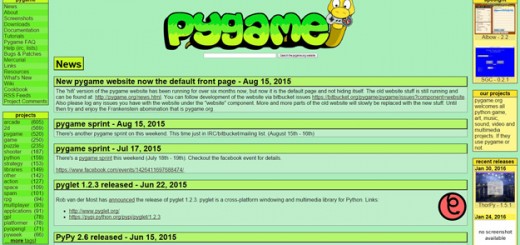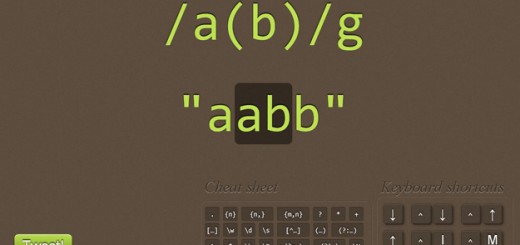A framework is considered as a software application which helps developers in quickly designing and developing dynamic websites. Every month myriad of frameworks been released by several developers to make development process easy and effective.
In this roundup we are showcasing some of the best php, html5 and css frameworks which will assist you within your coding and inspire you to design and develop cross browser dynamic websites and web applications. We hope these frameworks will serve your code purpose and projects. Enjoy !!
PHP Frameworks
1. Cake PHP
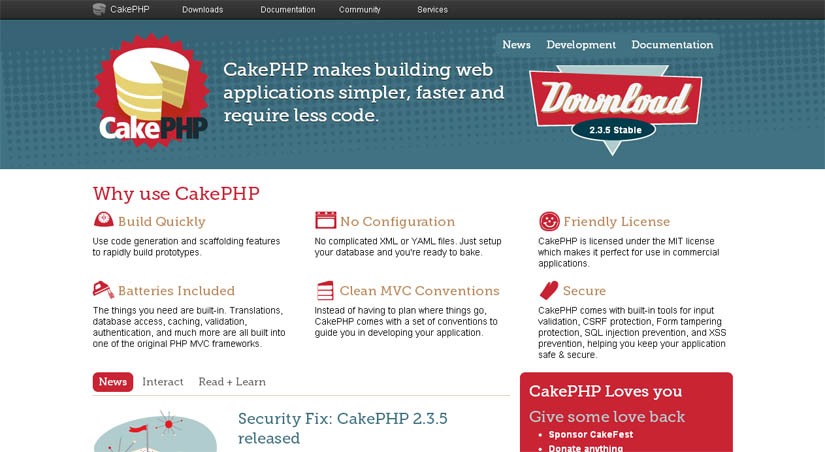
CakePHP is a rapid development framework for PHP that offers a flexible architecture for development, maintenance and deployment of applications. It uses the usual design patterns like MVC and ORM within the convention over configuration paradigm that helps lower development expenses and does not need the developers to write a lot of code.
Just like ZF, CakePHP does not require configuration. It is very simple to use. The company has a user friendly community called #cakephp on IRC that helps new users to begin. It is distributed under the MIT License and promises Best Practices like security, authentication and session handling. It has an object-oriented approach to keep you at ease.
2. Yii Framework

Yii is a free, open-source Web application development framework written in PHP5 that promotes clean, DRY design and encourages rapid development. It works to streamline your application development and helps to ensure an extremely efficient, extensible, and maintainable end product. Being extremely performance optimized, Yii is a perfect choice for any sized project. However, it has been built with sophisticated, enterprise applications in mind. You have full control over the configuration from head-to-toe (presentation-to-persistence) to conform to your enterprise development guidelines.
3. Zend

Zend Framework 2 is an open source framework for developing web applications and services using PHP 5.3+. Zend Framework 2 uses 100% object-oriented code and utilises most of the new features of PHP 5.3, namely namespaces, late static binding, lambda functions and closures. Zend Framework 2 evolved from Zend Framework 1, a successful PHP framework with over 15 million downloads.
The component structure of Zend Framework 2 is unique; each component is designed with few dependencies on other components. ZF2 follows the SOLID object oriented design principle. This loosely coupled architecture allows developers to use whichever components they want.
4. Symfony
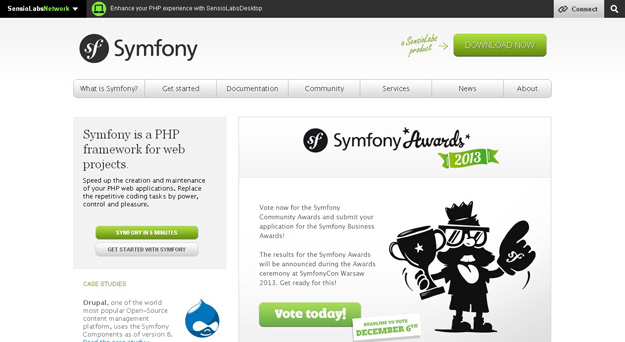
Symfony is a web application framework; symfony follows the model-view-controller (MVC) system and getting more popular day by day. Symfony is a free framework under the MIT license, Symfony has made development easy with the help of library which comprises of many PHP code classes.
5. Webasyst
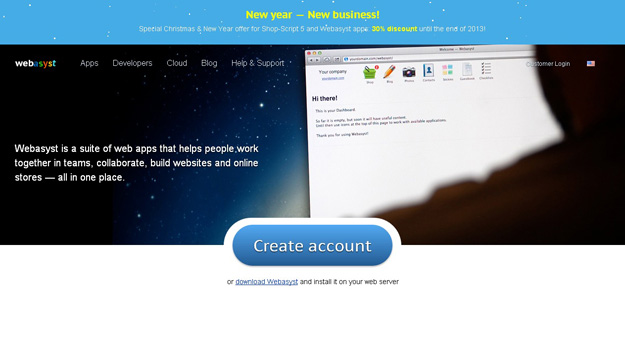
Webasyst is an open source PHP framework for developing sleek multi-user web apps, and complex websites. Comparing to other frameworks such as Zend and Symfony, Webasyst framework stays more focused and allows building apps for business and team usage more quickly and efficiently. The framework offers lots of ready-to-use tool for user management and authorization, UI building, mobile-ready access, etc.
6. Laravel
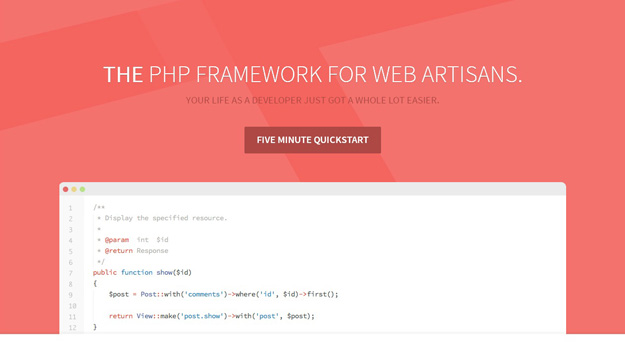
Laravel is a PHP framework committed to elegance and simplicity. Programming doesn’t have to be painful. In fact, it can be enjoyable with the right tools. Laravel is for all PHP programmers, even beginners. In fact, Laravel’s documentation makes Laravel a great choice for both beginning and advanced PHP programmers. In addition to the documentation, Laravel’s friendly community is always willing to help answer questions that aren’t covered in the documentation. Bundles are a great way to package and share Laravel code.
7. Guzzle
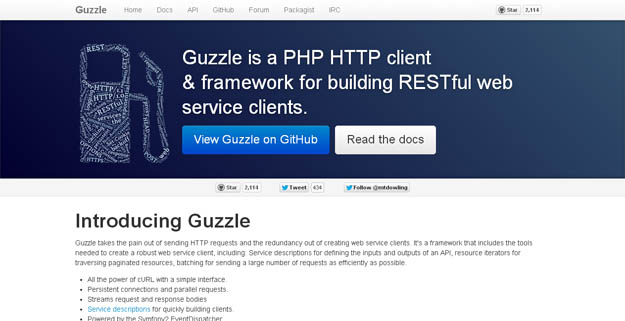
Guzzle takes the pain out of sending HTTP requests and the redundancy out of creating web service clients. It’s a framework that includes the tools needed to create a robust web service client, including: Service descriptions for defining the inputs and outputs of an API, resource iterators for traversing paginated resources, batching for sending a large number of requests as efficiently as possible.
8. Phalcon PHP
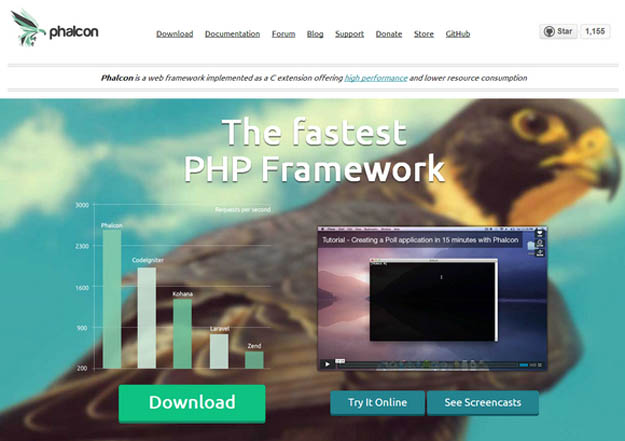
Phalcon PHP is a web framework delivered as a C extension providing high performance and lower resource consumption. Phalcon PHP is written in C with platform independence in mind. As a result, Phalcon PHP is available on Microsoft Windows, GNU/Linux, Mac OS X, You can either download a binary package for the system of your choice or build it from sources.
9. CodeIgniter
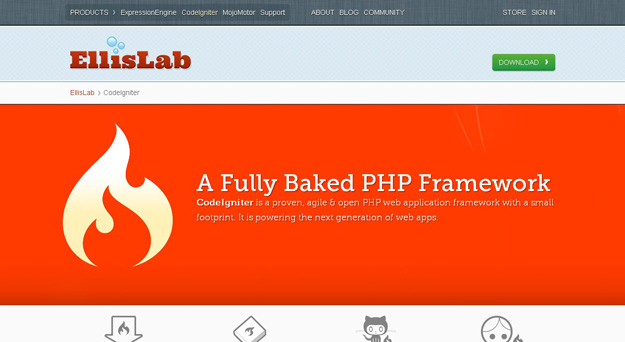
CodeIgniter is a powerful PHP framework with a very small footprint, built for PHP coders who need a simple and elegant toolkit to create full-featured web applications. If you’re a developer who lives in the real world of shared hosting accounts and clients with deadlines, and if you’re tired of ponderously large and thoroughly undocumented frameworks, then CodeIgniter might be a good fit.
10. Fuel PHP
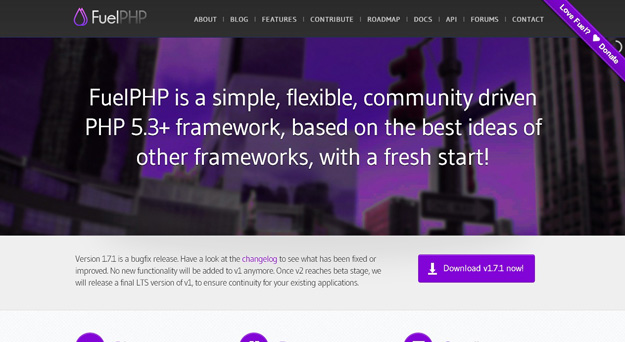
Fuel is a simple, flexible, community driven PHP 5.3 web framework based on the best ideas of other frameworks with a fresh start. Fuel has been tested on Apache, IIS and Nginx.
Fuel takes a different approach to many frameworks and strives to be community-driven. They have only been going for less than 6 months and already had 30 developers commit to the source code and documentation.
HTML5 Frameworks
1. Foundation 5

Millions of designers and engineers have adopted Foundation for their product and website design front-end workflow. Foundation was the first open-source framework to be responsive, semantic, mobile first and now, have partials with Interchange. Foundation 5 has just released, which is the fastest release to date – faster in all aspects of building products and websites.
They have built a new command line tool that will let you spin up Foundation projects preposterously fast, and those projects will now use Libsass, a back-end Sass compiling library that will dramatically speed up how long it takes for your SCSS changes by 5x.
2. Ionic
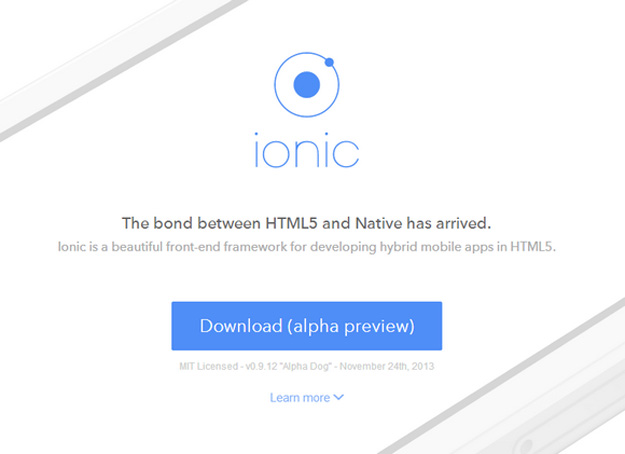
Ionic is a powerful HTML5 native app development framework that helps you build native-feeling mobile apps all with web technologies like HTML, CSS, and Javascript. Ionic is focused mainly on the look and feel, and UI interaction of your app. Ionic is free and open source, built with Sass and optimized for AngularJS. It is modeled off of popular native mobile development SDKs, making it easy to understand for anyone that has built a native app for iOS or Android.
3. Lime JS
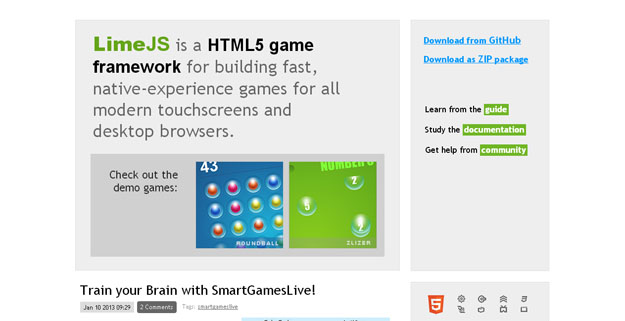
It is a HTML5 game framework for building games that’ll feel native and work fast in modern touchscreens and desktop browsers. LimeJS is created with Closure Library built by Google and comes with functions/classes to control the timeline, events, shapes and animations. Also, the framework has full support of sprite sheets (you can collect all images inside a single file).
4. 52 Framework
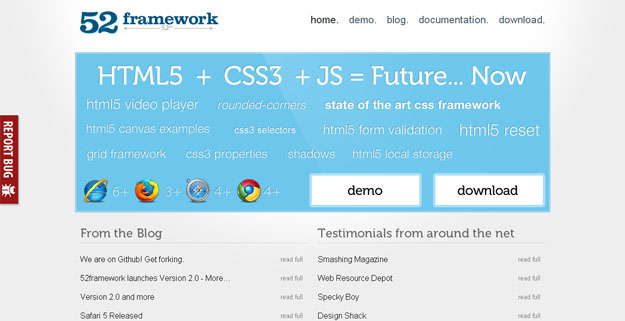
52 Framework is most popular HTML5-CSS3 based frame work among designers and developers. The support for all modern browsers with IE6 makes this framework most distinctive and useful framework in its category.
5. Sencha Touch
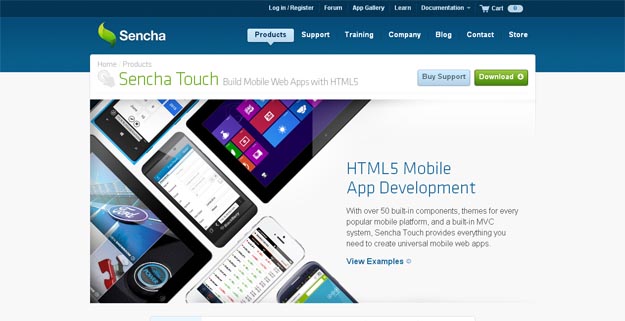
Sencha Touch, a high-performance HTML5 mobile application framework, is the cornerstone of the Sencha HTML5 platform. Built for enabling world-class user experiences, Sencha Touch is the only framework that enables developers to build powerful apps that work on iOS, Android, BlackBerry, Windows Phone, and more.
6. Jo

Jo is an open source mobile application framework that is based on HTML5 . It enables you to create for multiple platforms like webOS, iOS, Android, Symbian, Safari, Chrome and Dashboard Widgets. The framework is small in size, ~8kb, without any dependencies and compatible with many other JS frameworks. Jo is also compatible with PhoneGap and makes possible to create native apps besides web apps.
7. FireShell
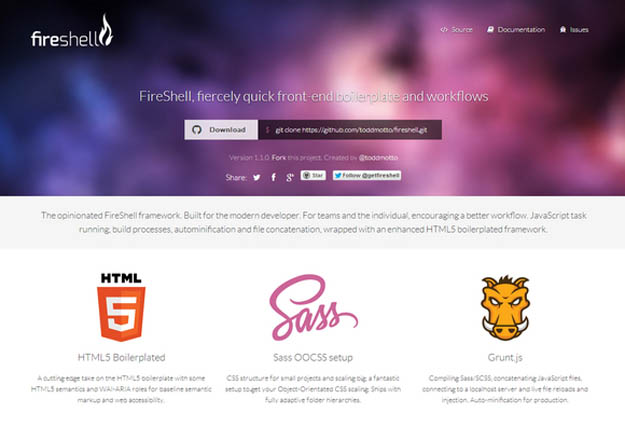
The opinionated FireShell framework. Built for the modern developer. For teams and the individual, encouraging a better workflow. JavaScript task running, build processes, autominification and file concatenation, wrapped with an enhanced HTML5 boilerplated framework. It’s a a cutting edge take on the HTML5 boilerplate with some HTML5 semantics and WAI-ARIA roles for baseline semantic markup and web accessibility. CSS structure for small projects and scaling big, a fantastic setup to get your Object-Orientated CSS scaling.
8. Gridless
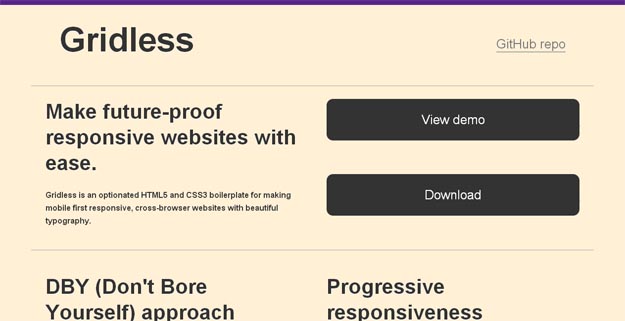
Gridless is an optionated HTML5 CSS3 boilerplate for making mobile first responsive, cross-browser websites with beautiful typography. It works on DBY (don’t bore yourself) approach and allows developers to use CSS normalization, beautiful typography, a well organized folder structure, IE bug fixes and other nice tricks for their websites.
9. iio Engine
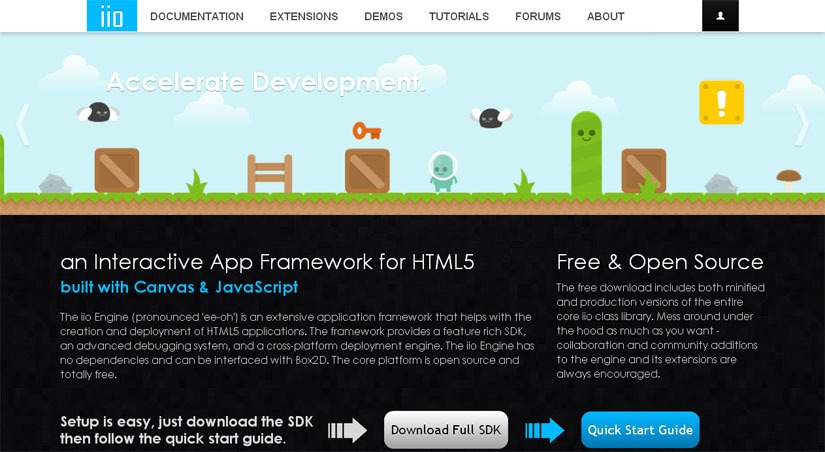
iio Engine is an open source framework for creating HTML5 applications with JavaScript and canvas. The framework is lightweight (45kb) and packed with a debugging system+ cross-platform deployment engine. It doesn’t require any JS frameworks and can work side-by-side with Box2D. iio Engine’s website provides a full documentation and many examples to simplify development.
10. Lungo.js
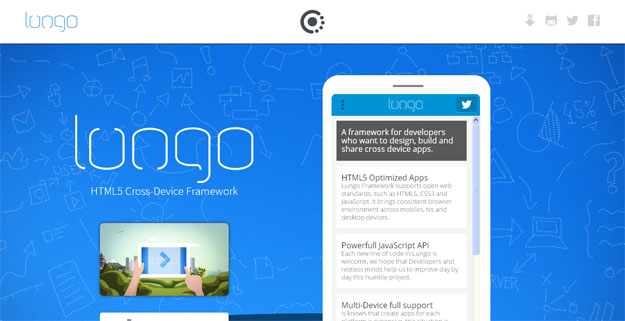
Lungo.jS is first mobile framework that is includes features of HTML5, CSS3, and JavaScript. Lungo.js helps developers to create iOS, Android, Blackberry and WebOS platform based applications. This framework is designed to take advantage of the features of current mobile devices and it captures events like swipe, tap double tap. It doesn’t use images, everything is available in vector, and you can directly distribute your apps to “Mobile Stores” or in websites.
CSS Frameworks
1. Twitter Bootstrap

Twitter Bootstrap is a toolkit created by Twitter for kickstarting CSS when developing websites. It is built with Less and consists of base CSS + HTML for typography, forms, buttons, tables, grids, navigation, and some more. The grid provided is 940px wide 16-column and, for the layouts, there are solutions for both fixed + fluid ones. Twitter Bootstrap’s HTML elements have a plain-yet-elegant style where form inputs get a nice box-shadow on focus or table rows being highlighted.
2. Pure : CSS Framework
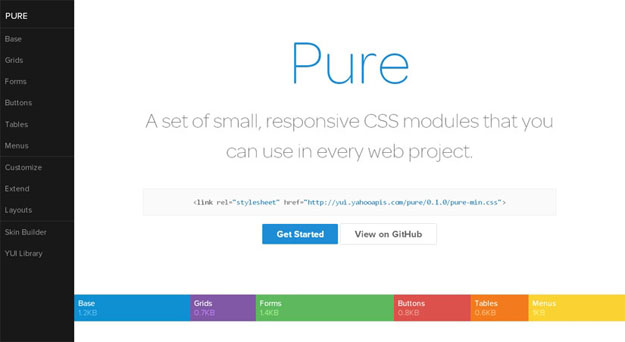
Pure is a fresh one that is created by Yahoo!. It uses Normalize.CSS and doesn’t use any JavaScript but only HTML-CSS. The framework is built with responsive layouts in mind and has styles for typography, grids, forms, buttons, tables and navigation. Markup used is very simple and the whole framework is pretty lightweight(5.7KB ).
3. Fitgrd : Responsive Grid System
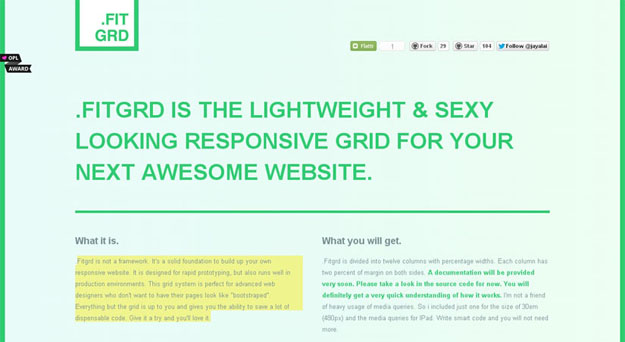
Fitgrd is not a framework. It’s a solid foundation to build up your own responsive website. It is designed for rapid prototyping, but also runs well in production environments. This grid system is perfect for advanced web designers who don’t want to have their pages look like “bootstraped”. Everything but the grid is up to you and gives you the ability to save a lot of dispensable code.
4. Metro UI CSS
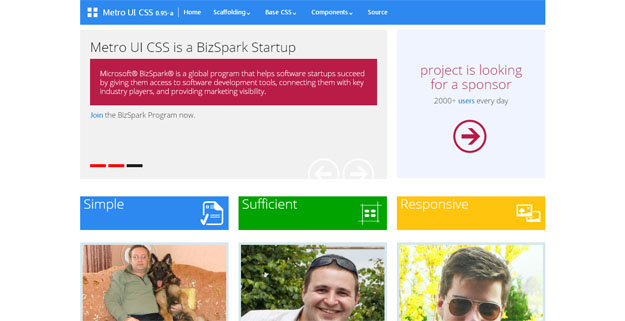
Metro UI CSS is a set of styles for creating such interfaces. It is a self-contained solution but can also be used side-by-side with any other frameworks. There are styles for the popular tiles, images, notices, forms, buttons and typography. The framework is also a “work in progress” and is mentioned to be enriched with more layout options + features.
5. SkelJS

skelJS is a lightweight frontend framework for building responsive sites and apps. Consisting of only a single JS file (weighing in at just 18kb as of this version), it gives designers and developers access to four powerful components: CSS Grid System, Responsive Handler, CSS Shortcuts and Plugin System.
6. Cardinal
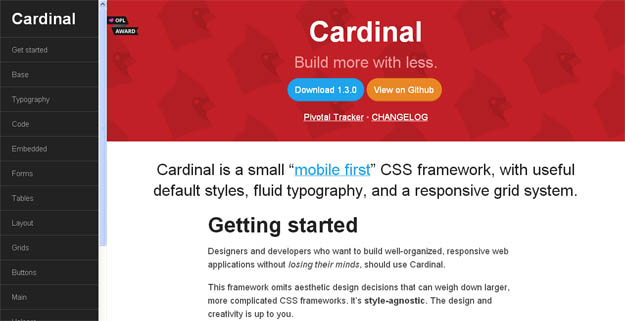
Cardinal is a small, “mobile first” CSS framework with some useful default styles, scalable typography, reusable modules, and a simple responsive grid system. Cardinal provides a new approach to scaling web typography and layout across multiple devices. It places little emphasis on pixel-precision, but does not restrict its usage. Instead, Cardinal leverages modular scale, unit-less line heights, and the power of the REM unit to make it simpler to resize the typography and layout of your entire application for different devices.
7. Gumby

Gumby Framework is a flexible, responsive CSS Framework, Powered by SASS. Create rapid and logical page layout and app prototypes with a flexible and responsive grid system and UI kit. It is built with the power of Sass. Sass is a powerful CSS preprocessor which allows us to develop Gumby itself with much more speed — and gives you new tools to quickly customize and build on top of the Gumby Framework. Gumby is developed following the latest standards and specs. In order to stay on the cutting edge, Gumby supports modern web browsers like: Chrome, Firefox, Opera, Internet Explorer 8 – 10.
8. 52 Framework

52framework is a CSS framework which provides an easy way to build websites using HTML5 & CSS3 while still supporting all modern browsers (including ie6). It uses HTML5 tags like header, nav, section, article, footer or new input field types like url, email, etc. The framework also has a HTML5 compatible reset stylesheet.
9. 960 GS
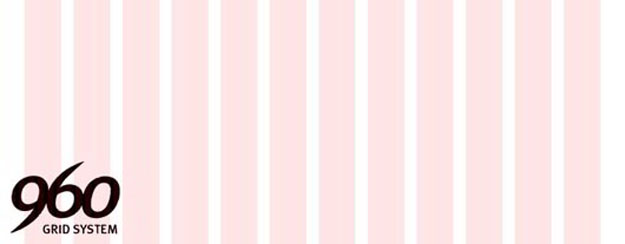
A CSS framework that is better known for helping you to organize your work flow as far as your website development is concerned is none other than the 960GS framework. Most importantly, the 960GS framework is known for offering you two diverse packages of twelve as well as sixteen columns that can either be used on its own or in accordance with one another. Secondly, the 960GS framework also makes available an overlay tool.
10. Less : HTML Powered CSS Framework
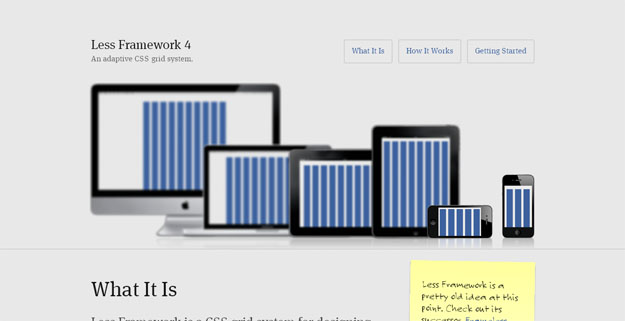
Less Framework is a lightweight CSS framework that enables you to build flexible multi-column website layouts. It contains an eight-column grid optimized for a line-height of 24px & a set of typography presets based on the golden ratio which is parallel to the grid’s vertical rhythm.
11. YAML
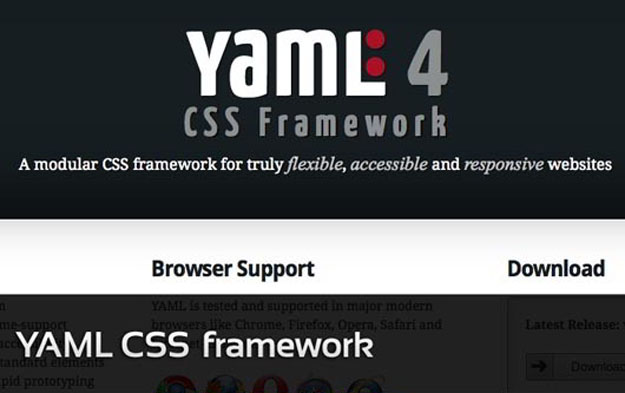
YAML is a CSS framework that is popularly known as Yet Another Multicolumn Layout. The best part about this particular CSS framework is that it is perfectly compatible with almost all the browsers that are operative in today’s date. Apart from this, the developer of YAML Dirk Jesse has come up with this framework keeping into mind the web standards. In addition, this CSS framework comes complete with a YAML Builder.



